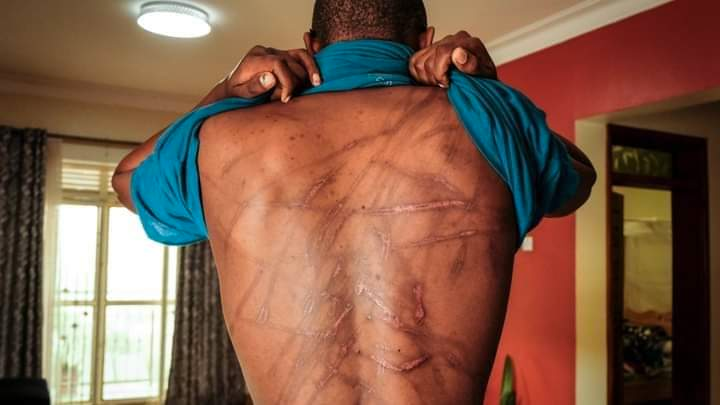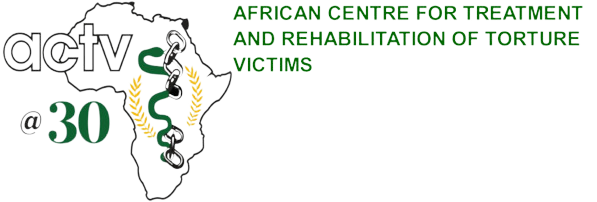Torture in Uganda: From ‘never again’ to ‘maybe, sometimes’ to ‘what will you do?’
by DR BUSINGYE KABUMBAJuly 2, 2025

Last week, on Thursday 26th June 2025, Uganda joined the rest of the world in commemorating the UN International Day in support of torture survivors.
I was immensely privileged to be invited by the Coalition Against Torture in Uganda (CAT), chaired by the African Centre for Treatment and Rehabilitation of Torture Victims (ACTV) [and which includes such critical members as Chapter Four Uganda, the Uganda Human Rights Commission (UHRC), Foundation for Human Rights Initiative (FHRI), the Refugee Law Project (RLP) and the National Coalition of Human Rights Defenders in Uganda (NCHRD-U)] to deliver a keynote address at a public dialogue they convened on that day.
In this column, I reprise some of the reflections I shared on that occasion. It seems to me that to understand torture in Uganda today, we must recall the role it played in the creation of the State itself. The imposition and maintenance of colonialism in the entity now called Uganda, as it was in other parts of the world, was an act of violence.
The peoples now united as ‘Ugandans’ did not enter into this political unit willingly – it took extreme violence (including war crimes and crimes against humanity, such as torture) – to effect this. Indeed, throughout the period of British colonial rule in Uganda, the rights of Africans in the Protectorate were never set out in any robust legal format.
In the framing of Mamdani (the elder), the African ‘native’ was a subject (suffering only obligations) rather than a citizen (enjoying rights in addition to obligations) [See, generally, Mahmood Mamdani (1996) Citizen and subject: Contemporary Africa and the legacy of late colonialism (Princeton: Princeton University Press)].
It was perhaps unsurprising that the absence of strong protection of human rights in colonial Uganda would be followed by lukewarm safeguards in the post-independence era.
Thus, although Section 21 (1) of the 1962 Constitution provided that no person could be subjected to torture or to inhuman or degrading punish or treatment, this was severely qualified by Section 21 (2), which was to the effect that ‘nothing contained in or done under the authority of any law [could] be held to be inconsistent with or in contravention of [that] section to the extent that the law in question authorize[d] the infliction of any description of punishment that was lawful in Uganda immediately before 9th October 1962’.
Essentially, this subordinated the constitutional right to existing law – which would invariably be problematic given its foundation in the violence of the colonial experience (allowing, for instance, for the continued application of such inhumane practices as corporal punishment).
This problematic formulation would be replicated in the 1966 and 1967 Constitutions (Sections 21 and 12, respectively). The 1995 Constitution heralded a new era for the protection of human rights in Uganda. Among other things, the prohibition of torture (under Article 24) was not qualified.
In addition, in terms of Article 44, the freedom from torture was specially articulated as a non-derogable right (alongside the right to a fair trial, to an order of habeas corpus, and the freedom from slavery). In fact, in the period following the adoption of the 1995 Constitution, Ugandan tribunals demonstrated a willingness to go further – in safeguarding the freedom against torture – than what the prevailing international law might have envisaged, a trend in which the jurisprudence of the UHRC played an important part.
In the 1999 matter of Fred Tumuramye v Gerald Bwete and 10 Others, for example, the Tribunal examined the definition of torture under the United Nations Convention Against Torture and Other Cruel, Inhuman or Degrading Treatment or Punishment (UNCAT) and observed: ‘A definition that conveys the meaning that torture or cruelty in law can only be committed by government or its agent would be very restrictive and ignores the fact that acts of torture, inhumane and degrading treatment or punishment are always practiced by individuals, groups or organisations that have nothing to do with government.
“Mob justice” can be torturous, cruel and inhuman. Certain types of family violence are acts that can inflict severe pain and suffering as a form of punishment or a way of obtaining information.’ [See also, to the same effect, the UHRC Tribunal decisions in Emojong Silver Friday v Peter Katongole and Emmanuel Mpondi v Chairman Board of Governors and 2 Others).
Indeed, it is this wider, and more progressive, approach – consistent with the spirit of both Articles 24 and 20 (2) – which found its way into the Prevention and Prohibition of Torture Act of 2012 (‘the PPTA’) (whose Section 2 (1) defines torture to include actions, and omissions, by private persons). Read the full article here.

